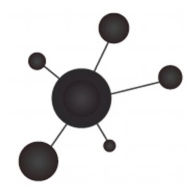

Icinga and Amazon CloudWatch are monitoring solutions competing in the IT infrastructure monitoring category. Based on data comparisons, Amazon CloudWatch has the upper hand in integration capabilities and advanced analytics, while Icinga is preferred for customizable monitoring options.
Features: Icinga offers adaptable monitoring with extensive plugin support, network monitoring flexibility, and a strong event handler for automated responses. Amazon CloudWatch integrates seamlessly with AWS services, provides robust analytics, and offers detailed metrics collection.
Room for Improvement: Icinga could enhance its user-friendly interface, simplify initial setup, and improve detailed performance analytics. Amazon CloudWatch could reduce its cost barrier, improve documentation clarity for non-AWS infrastructures, and expand its features beyond the AWS ecosystem.
Ease of Deployment and Customer Service: Amazon CloudWatch features a simplified deployment within AWS environments and extensive support documentation. Icinga requires a more involved setup process, but benefits from an active open-source community offering support and customization guidance.
Pricing and ROI: Icinga is cost-effective with no licensing fees, appealing for budget-conscious users. Amazon CloudWatch employs a pay-as-you-go model, offering comprehensive integration at potentially higher costs, providing significant ROI for AWS-centric operations.
| Product | Market Share (%) |
|---|---|
| Amazon CloudWatch | 2.4% |
| Icinga | 3.6% |
| Other | 94.0% |


| Company Size | Count |
|---|---|
| Small Business | 17 |
| Midsize Enterprise | 9 |
| Large Enterprise | 24 |
| Company Size | Count |
|---|---|
| Small Business | 9 |
| Midsize Enterprise | 4 |
| Large Enterprise | 7 |
Amazon CloudWatch integrates seamlessly with AWS, providing real-time monitoring and alerting features. Its interface supports task automation, enhancing troubleshooting and analytics capabilities, while offering strong security and scalability at a cost-effective rate.
Amazon CloudWatch is an impactful platform for monitoring AWS resources and managing application performance. It simplifies infrastructure performance monitoring by providing comprehensive analytics capabilities, including application insights and event scheduling. Users appreciate CloudWatch for its detailed metrics, dashboards, and support in issuing alerts to detect anomalies. It efficiently tracks performance, optimizes resource utilization, and ensures service availability. CloudWatch is recognized for its robust alerting features and integration with other AWS services, further supporting its resource monitoring capabilities. However, there is room for improvement in dashboard customization, log streaming speed, and integration with non-AWS services. Enhancements in API integration, machine learning features, and support for third-party tools are also desired.
What features does Amazon CloudWatch offer?Industries implementing Amazon CloudWatch often focus on optimizing IT infrastructure. Companies in sectors like finance and e-commerce rely on its monitoring and alerting capabilities to ensure service uptime and performance. The platform's automation and analytics features empower teams to proactively manage performance and detect potential issues promptly.
Icinga is a robust tool for monitoring IT infrastructure, known for its distributed monitoring capabilities and seamless integration with multiple platforms. It efficiently observes servers, network devices, and environments like Linux and Windows, enabling proactive issue identification and resource management.
With a focus on task delegation and clustering, Icinga offers an intuitive interface through its GUI and Icinga Director, simplifying configuration. The extensive plugin library supports diverse technologies, while the API allows automation with tools like Terraform and Ansible. Despite its strengths, users report challenges with data display in the GUI, a need for improved dashboards, and complex configuration processes. Users benefit from its SNMP alerts, email notifications, and automated incident handling, making it essential for managed service environments and enterprises.
What are the key features of Icinga?Icinga is widely adopted in IT environments for monitoring servers, networks, and applications across industries such as finance, healthcare, and technology. Its ability to integrate with various operating systems and automation platforms makes it a versatile choice for industries prioritizing comprehensive surveillance and proactive management of their infrastructure.
We monitor all Cloud Monitoring Software reviews to prevent fraudulent reviews and keep review quality high. We do not post reviews by company employees or direct competitors. We validate each review for authenticity via cross-reference with LinkedIn, and personal follow-up with the reviewer when necessary.